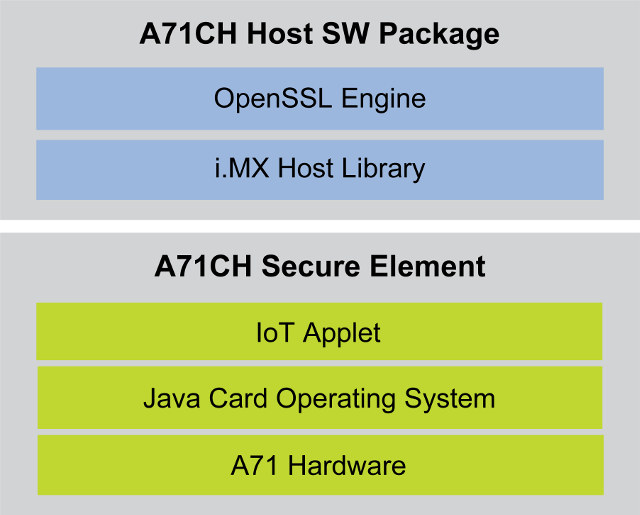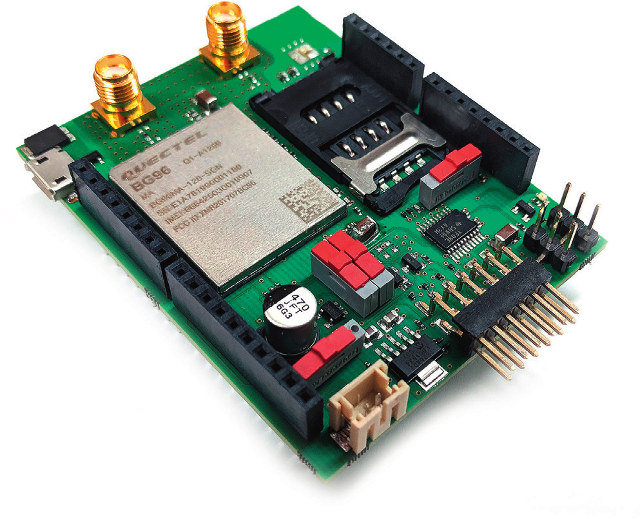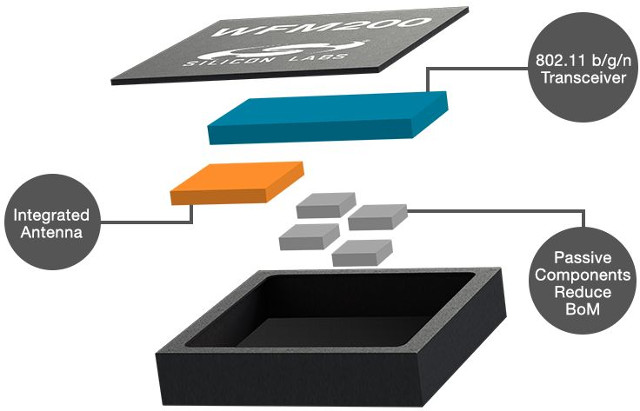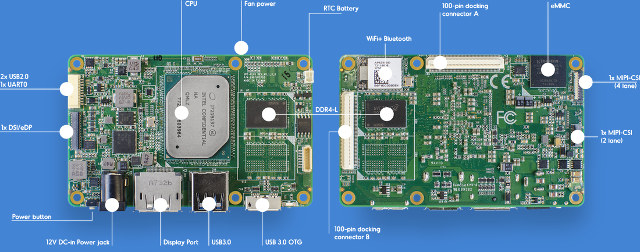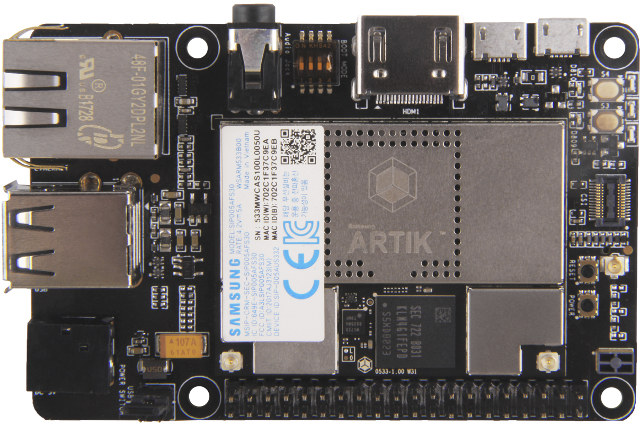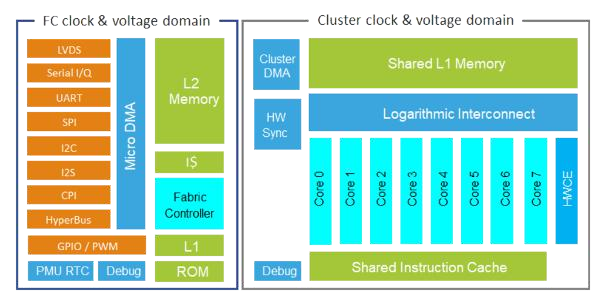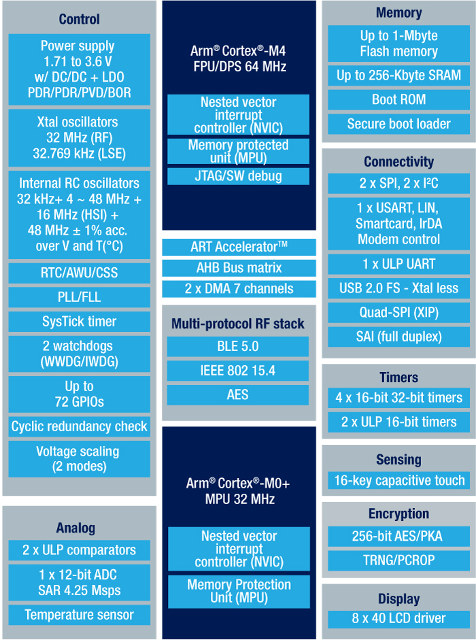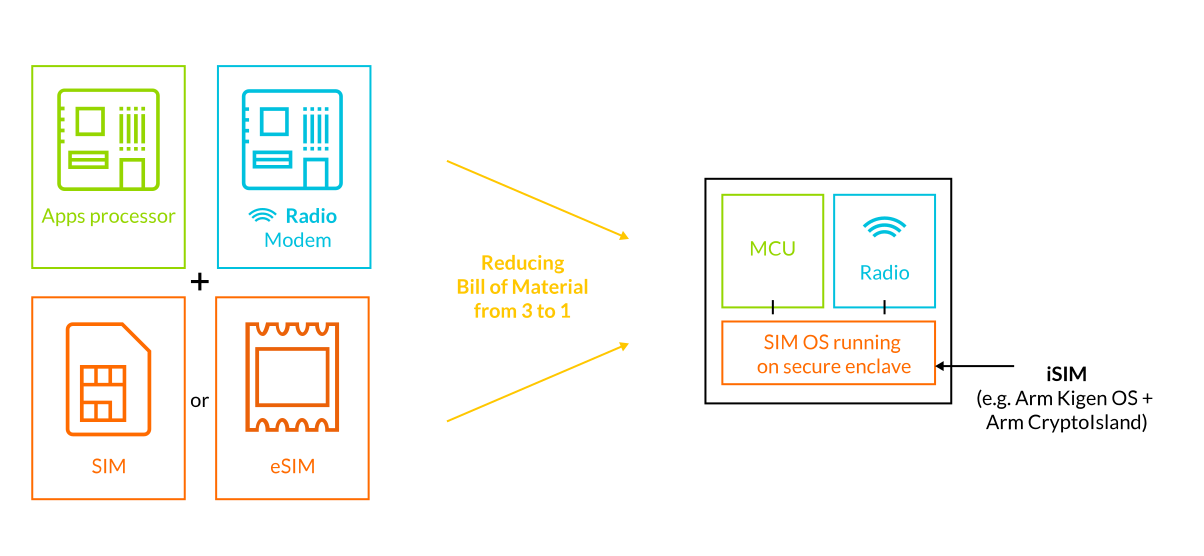The industry clearly has an issue at hand with the security of the Internet of Things, and the problem is complex as some devices are easily accessible due to bad configuration (e.g. default username/password), while others may have security flaws at various levels of the software stack from the low level bootloaders to the operating systems, and applications. Nowadays, devices also need to be upgradeable, and communicate with the cloud, and that introduces other attack vectors in case malignant firmware is installed instead, or a man-in-the-middle attack occurs. While some people may claim security can be achieved by software only, we are seeing security evolving towards combined software and hardware solutions, for example with Arm Trustzone built into SoCs, but some companies are also introducing Secure Element chip, which Samsung has already done and integrated into their Artik modules to secure data from the hardware to the cloud. NXP has […]
Avnet Silica NB-IoT Sensor Shield Works with mbed OS 5, STM32 Nucleo Board
If for some reasons, none of the many NB-IoT boards launched recently suit your needs, there’s yet another option with Avnet Silica NB-IoT sensor shield, that supports – despite the name – also supports LTE Cat M1 (eMTC) beside NB-IoT (LTE Cat NB1), and comes with Arduino headers, as well as a Pmod connector. The board relies on Quectel BG96 module, and can be controlled with Arm mbed OS 5 when connected to STM32 Nucleo board. NB-IoT Sensor Shield specifications: Cellular Module – Quectel BG96 LPWA Module Multi Modes: Cat.M1, Cat.NB1, EGPRS Global bands Cat M1/NB1: B1 B2 B3 B4 B5 B8 B12 B13 B18 B19 B20 B26 B28 B39 (B39 for Cat M1 only) EGPRS: 850/900/1800/1900 MHz Voice Over LTE support (M1 only) – PCM digital audio interface SIM card holder (also optional embedded SIM) Optional GNSS – GPS, GLONASS, BeiDou/Compass, Galileo, QZSS Expansion – Arduino headers, Pmod connector […]
Silicon Labs WF200 WiFi Transceivers & WFM200 WiFi Modules are Designed for Battery Powered Devices
When it comes to power consumption, WiFi is not the best wireless standard around, and even the most power efficient WiFi SoCs/modules consume several times the power required for Bluetooth LE Tx or Rx. Yet we still have plenty of battery powered devices relying on WiFi, so companies are working on improving efficiency, and Silicon Labs has recently announced the WF200 transceivers and WFM200 modules that support 2.4 GHz 802.11 b/g/n Wi-Fi and are said to slash power consumption in half. WF200 / WFM200 highlights: Low transmit (Tx: 138 mA) and receive (Rx: 48 mA) power 200 µA average Wi-Fi power consumption (DTIM = 3) Link budget of 115 dBm for long-range Wi-Fi transmissions Excellent antenna diversity and wireless coexistence in crowded 2.4 GHz environments Security – Secure boot and host interface, hardware cryptography acceleration supporting AES, PKE and TRNG Packages – 4 mm x 4 mm QFN32 transceiver and […]
UP Core Plus Board To Support AI Plus FPGA and AI Net Ethernet Expansion Boards
We’ve just written about UP AI Core mPCIe card part of the new AI Edge family from UP Board, but other members will soon be released including UP Core Plus board, that builds upon UP Core Cherry Trail board launched last year, with a choice of Intel Atom x5/x7, and Celeron/Pentium Apollo Lake processors. The form factor is different, but just like the first UP Core board, the Core Plus board supports expansion boards via docking connectors such as the Net Plus Ethernet expansion, and the AI Plus expansion board with Intel Cyclone 10 GX FPGA. UP Core Plus specifications: SoC (one or the other) Intel Atom x5-E3940 (2M Cache, up to 2.00 GHz) Intel Atom x7-E3950 (2M Cache, up to 2.00 GHz) Intel Celeron N3350 (2M Cache, up to 2.50 GHz) Intel Pentium N4200 (2M Cache, up to 2.50 GHz) System Memory – 2GB, 4GB or 8GB on-board DDR4L-2400 […]
Eagleye 530s Board Features Samsung Artik 530s IoT Module, Leverages Raspberry Pi Form Factor
Samsung Artik 530 is a module designed for the Internet of Things based on a quad core Arm Cortex A9 processor, and supporting Ethernet, dual band WiFi, Bluetooth 4.2, and 802.15.4/Zigbee/Thread connectivity, as well as exposing display and camera interfaces, and of course various I/Os. The module was launched about one year ago with a developer kit that cost $189 and up, but Samsung has now worked with Seeed Studio to launch a cheaper developer board – called Eagleye – based on the secure version of the module (Artik 530s) and mostly following Raspberry Pi form factor in order to take advantage of its hardware ecosystem. Eagleye 530s board specifications: SoC – Unnamed quad core Arm Cortex A9 processor @ 1.2GHz with 3D graphics accelerator System Memory – 1GB DDR3 Storage – 4GB eMMC flash, SD card slot Connectivity 802.11a/b/g/n dual band SISO (2.4G/5G) Bluetooth 4.2(BLE+Classic) Zigbee/Thread 802.15.4 Gigabit Ethernet […]
GreenWaves GAP8 is a Low Power RISC-V IoT Processor Optimized for Artificial Intelligence Applications
GreenWaves Technologies, a fabless semiconductor startup based in Grenoble, France, has designed GAP8 IoT application processor based on RISC-V architecture, and optimized for image and audio algorithms including convolutional neural network (CNN) inference with high energy efficiency thanks to an 8-core computational cluster combined with a convolution hardware accelerator. The design is based on RISC-V based Parallel Ultra Low Power (PULP) computing open-source platform. The new processor targets industrial and consumer products integrating artificial intelligence, and advanced classification such as image recognition, counting people and objects, machine health monitoring, home security, speech recognition, consumer robotics, wearables and smart toys. Some of GAP8 processor specifications: 1x extended RISC-V fabric controller core with 16 kB data and 4 kB instruction cache for system control 8x extended RISC-V compute cores with 64 kB shared data memory and 16 kB shared instruction cache 1x Hardware optimized synchronization unit 1x Hardware Convolution Engine (HWCE) Multi […]
STMicro STM32WB Dual Core Cortex M4/M0+ MCU Comes with Bluetooth 5 & 802.15.4 Radios
STMicro has announced yet another family part of their STM32 portfolio with STM32WB micro-controller family featuring an Arm Cortex M4 application core, a Cortex M0+ core to offload the main core of networking tasks, as well as Bluetooth 5 and 802.15.4 radios. The MCU’s 802.15.5 radio can run other wireless protocols concurrently, including OpenThread, ZigBee, or proprietary protocols used to connect devices to the Internet of Things (IoT). STM32WB MCUs share the following key specifications: Application Core – Arm Cortex-M4 CPU @ up to 64 MHz with FPU, adaptive real-time accelerator (ART Accelerator), MPU, 80 DMIPS and DSP instructions Memory – Up to 256 KB RAM, including 64 KB with hardware parity check, 20×32-bit Backup Register Storage Up to 1 MB Flash with sector protection (PCROP) against R/W operations for Bluetooth Low Energy and 802.15.4 SW stack Quad SPI memory interface with XIP Radio 2.4 GHz RF transceiver supporting Bluetooth […]
Arm Kigen Puts SIM Card Functionality Right into IoT SoCs
Most cellular devices rely on SIM cards, and while with micro and nano SIM, the card has become smaller the electronics and connection remains the same. More recently, we’ve started to see boards featuring eSIM (embedded SIM), a chip soldered directly to the board that’s remotely provisioned by a local mobile network operator, so no more card needed, and the chip should not be tied to a single operator, so you can change plan whenever you want. But soon we won’t be able to find out if a board supports cellular connectivity by looking for a SIM card slot or eSIM chip – although the antenna(s) will still be there, and give a pretty obvious clue – , as Arm has now unveiled Kigen that integrates SIM identity directly into SoCs for the Internet of Things. This will enable what the company (the industry?) call integrated SIMs (iSIM) combining an […]


